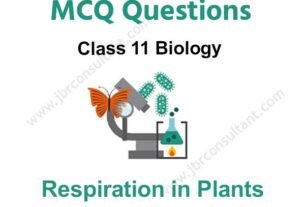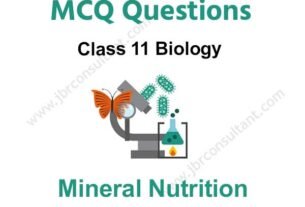Structure of Atom Class 11 MCQ is one of the best strategies to prepare for the CBSE Class 11 Board exam. If you want to complete a grasp concept or work on one’s score, there is no method except constant practice. Students can improve their speed and accuracy by doing more MCQs on Structure of Atom Class 11, which will help them all through their board tests.
Structure of Atom Class 11 MCQ Question with Answer
Class 11 Chemistry MCQ with answers are given here to Chapter 2 Structure of Atom. These MCQs are based on the latest CBSE board syllabus and relate to the latest Class 11 Chemistry syllabus. By Solving these Class 11 MCQs, you will be able to analyze all of the concepts quickly in the chapter and get ready for the Class 11 Annual exam.
Learn Class 11 Structure of Atom MCQs with answers pdf free download according to the latest CBSE and NCERT syllabus. Students should prepare for the examination by solving CBSE Class 11 Chemistry Structure of Atom MCQ with answers given below :
Question 1. Be2+ is isoelectronic with which of the following ions?
(a) H+
(b) Li+
(c) Na+
(d) Mg2+
Answer
B
Question 2. Isoelectronic species are
(a) CO, CN–, NO+, C2 2–
(b) CO–, CN, NO, C2 –
(c) CO+, CN+, NO–, C2
(d) CO, CN, NO, C2
Answer
A
Question 3. The ion that is isoelectronic with CO is
(a) CN–
(b) N2 +
(c) O2–
(d) N2 –
Answer
A
Question 4. Which one of the following is not isoelectronic with O2–?
(a) Tl+
(b) Na+
(c) N3–
(d) F–
Answer
A
Question 5. Which of the following series of transitions in the spectrum of hydrogen atom falls in visible region?
(a) Brackett series
(b) Lyman series
(c) Balmer series
(d) Paschen series
Answer
C
Question 6. The number of protons, neutrons and electrons in 17571Lu, respectively, are
(a) 71, 104 and 71
(b) 104, 71 and 71
(c) 71, 71 and 104
(d) 175, 104 and 71
Answer
A
Question 7. Calculate the energy in joule corresponding to light of wavelength 45 nm. (Planck’s constant, h = 6.63 × 10–34 J s, speed of light, c = 3 × 108 m s–1)
(a) 6.67 × 1015
(b) 6.67 × 1011
(c) 4.42 × 10–15
(d) 4.42 × 10–18
Answer
D
Question 8. The value of Planck’s constant is 6.63 × 10–34 Js. The speed of light is 3 × 1017 nm s–1. Which value is closest to the wavelength in nanometer of a quantum of light with frequency f 6 × 1015 s–1?
(a) 50 |
(b) 75
(c) 10
(d) 25
Answer
A
Question 9. According to law of photochemical equivalence the energy absorbed (in ergs/mole) is given as (h = 6.62 × 10–27 ergs, c = 3 × 1010 cm s–1, NA = 6.02 × 1023 mol–1)
(a) 1.196 ×108λ
(b) 2.859 105 ×λ
(c) 2.859 ×1016λ
(d) 1.196 ×1016λ
Answer
A
Question 10. The energies E1 and E2 of two radiations are 25 eV and 50 eV respectively. The relation between their wavelengths i.e., λ1 and λ2 will be
(a) λ1 = λ2
(b) λ1 = 2λ2
(c)λ1 = 4λ2
(d)λ1=1/2 λ2
Answer
B
Question 11. The value of Planck’s constant is 6.63 × 10–34 J s. The velocity of light is 3.0 × 108 m s–1. Which value is closest to the wavelength in nanometers of a quantum of light with requency of 8 × 1015 s–1 ?
(a) 2 × 10–25
(b) 5 × 10–18
(c) 4 × 101
(d) 3 × 107
Answer
C
Question 12. For given energy, E = 3.03 × 10–19 joules corresponding wavelength is (h = 6.626 × 10–34 J sec, c = 3 × 108 m/sec)
(a) 65.6 nm
(b) 6.56 nm
(c) 3.4 nm
(d) 656 nm
Answer
D
Question 13. According to the Bohr theory, which of the following transitions in the hydrogen atom will give rise to the least energetic photon?
(a) n = 6 to n = 1
(b) n = 5 to n = 4
(c) n = 6 to n = 5
(d) n = 5 to n = 3
Answer
C
Question 14. The energy of second Bohr orbit of the hydrogen atom is –328 kJ mol–1; hence the energy of fourth Bohr orbit would be
(a) – 41 kJ mol–1
(b) –82 kJ mol–1
(c) –164 kJ mol–1
(d) –1312 kJ mol–1
Answer
B
Question 15. The frequency of radiation emitted when the electron falls from n = 4 to n = 1 in a hydrogen atom will be (Given ionization energy of H = 2.18 × 10–18 J atom–1 and h = 6.626 × 0–34 J s)
(a) 1.54 × 1015 s–1
(b) 1.03 × 1015 s–1
(c) 3.08 × 1015 s–1
(d) 2.00 × 1015 s–1
Answer
C
Whoever needs to take the CBSE Class 11 Board Exam should look at this MCQ. To the Students who will show up in CBSE Class 11 Chemistry Board Exams, It is suggested to practice more and more questions. Aside from the sample paper you more likely had solved. These Structure of Atom Class 11 MCQ are ready by the subject specialists themselves.
Question 16. In hydrogen atom, energy of first excited state is –3.4 eV. Then find out K.E. of same orbit of hydrogen atom.
(a) +3.4 eV
(b) +6.8 eV
(c) –13.6 eV
(d) +13.6 eV
Answer
A
Question 17. Who modified Bohr’s theory by introducing elliptical orbits for electron path?
(a) Rutherford
(b) Thomson
(c) Hund
(d) Sommerfeld
Answer
D
Question 18. What will be the longest wavelength line in Balmer series of spectrum?
(a) 546 nm
(b) 656 nm
(c) 566 nm
(d) 556 nm
Answer
B
Question 19. The Bohr orbit radius for the hydrogen atom (n = 1) is approximately 0.530 Å. The radius for the first excited state (n = 2) orbit is (in Å)
(a) 4.77
(b) 1.06
(c) 0.13
(d) 2.12
Answer
D
Question 20. In a Bohr’s model of an atom, when an electron jumps from n = 1 to n = 3, how much energy will be emitted or absorbed?
(a) 2.389 × 10–12 ergs
(b) 0.239 × 10–10 ergs
(c) 2.15 × 10–11 ergs
(d) 0.1936 × 10–10 ergs
Answer
D
Question 21. The radius of hydrogen atom in the ground state is 0.53 Å. The radius of Li2+ ion (atomic number = 3) in a similar state is
(a) 0.53 Å
(b) 1.06 Å
(c) 0.17 Å
(d) 0.265 Å
Answer
C
Question 22. The spectrum of He is expected to be similar to that
(a) H
(b) Li+
(c) Na
(d) He+
Answer
B
Question 23. If r is the radius of the first orbit, the radius of nth orbit of H-atom is given by
(a) rn2
(b) rn
(c) r/n
(d) r2n2
Answer
A
Question 24. A 0.66 kg ball is moving with a speed of 100 m/s. The associated wavelength will be (h = 6.6 × 10–34 J s)
(a) 6.6 × 10–32 m
(b) 6.6 × 10–34 m
(c) 1.0 × 10–35 m
(d) 1.0 × 10–32 m
Answer
C
Question 25. The uncertainty in momentum of an electron is 1 × 10–5 kg m/s. The uncertainty in its position will be (h = 6.62 × 10–34 kg m2/s)
(a) 5.27 × 10–30 m
(b) 1.05 × 10–26 m
(c) 1.05 × 10–28 m
(d) 5.25 × 10–28 m
Answer
A
Question 26. The measurement of the electron position is associated with an uncertainty in momentum, which is equal to 1 × 10–18 g cm s–1. The uncertainty in electron velocity is (mass of an lectron is 9 × 10–28 g)
(a) 1 × 105 cm s–1
(b) 1 × 1011 cm s–1
(c) 1 × 109 cm s–1
(d) 1 × 106 cm s–1
Answer
C
Question 27. Given : The mass of electron is 9.11 × 10–31 kg, Planck constant is 6.626 × 10–34 J s, the uncertainty involved in the measurement of velocity within a distance of 0.1 Å is
(a) 5.79 × 105 m s–1
(b) 5.79 × 106 m s–1
(c) 5.79 × 107 m s–1
(d) 5.79 × 108 m s–1
Answer
B
Question 28. If uncertainty in position and momentum are equal, then uncertainty in velocity is
(a) 1/m √h π
(b)√ h π
(c) 1 /2m √h π
(d) √h2π
Answer
C
Question 29. The de Broglie wavelength of a particle with mass 1 g and velocity 100 m/s is
(a) 6.63 × 10–35 m
(b) 6.63 × 10–34 m
(c) 6.63 × 10–33 m
(d) 6.65 × 10–35 m
Answer
C
Question 30. The position of both, an electron and a helium atom is known within 1.0 nm. Further the momentum of the electron is known within 5.0 × 10–26 kg m s–1. The minimum ncertainty in the measurement of the momentum of the helium atom is
(a) 8.0 × 10–26 kg m s–1
(b) 80 kg m s–1
(c) 50 kg m s–1
(d) 5.0 × 10–26 kg m s–1
Answer
D
You can easily get good marks If you study with the help of Class 11 Structure of Atom MCQ. We trust that information provided is useful for you. NCERT Structure of Atom Class 11 MCQ PDF Free Download would without a doubt create positive results.
We hope the information shared above in regards to MCQ on Structure of Atom Class 11 with Answers has been helpful to you. if you have any questions regarding CBSE Class 11 Chemistry Solutions MCQs Pdf, write a comment below and we will get back to you as soon as possible.
Frequently Asked Question (FAQs)
How many MCQ questions are there in Class 11 chapter 2 Chemistry?
In Class 11 chapter 2 Chemistry, we have provided 30 Important MCQ Questions, But in the future, we will add more MCQs so that you can get good marks in the Class 11 exam.
Can we score good marks in Class 11 Chemistry with the help of Structure of Atom MCQ Questions?
Yes, MCQ Question is one of the best strategies to make your preparation better for the CBSE Board Exam. It also helps to know the student’s basic understanding of each chapter. So, You can score good marks in the Class 11 Chemistry exam.

